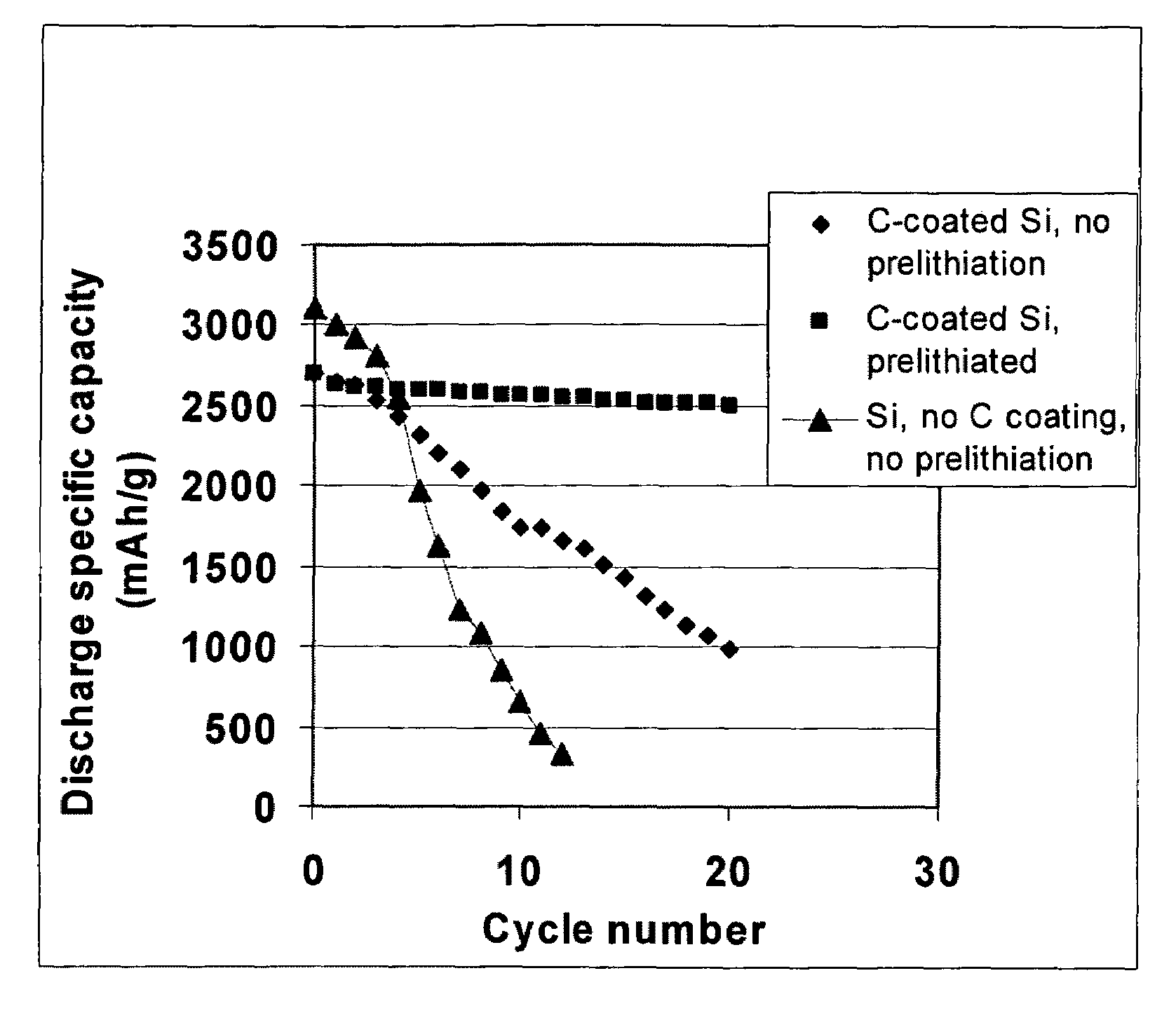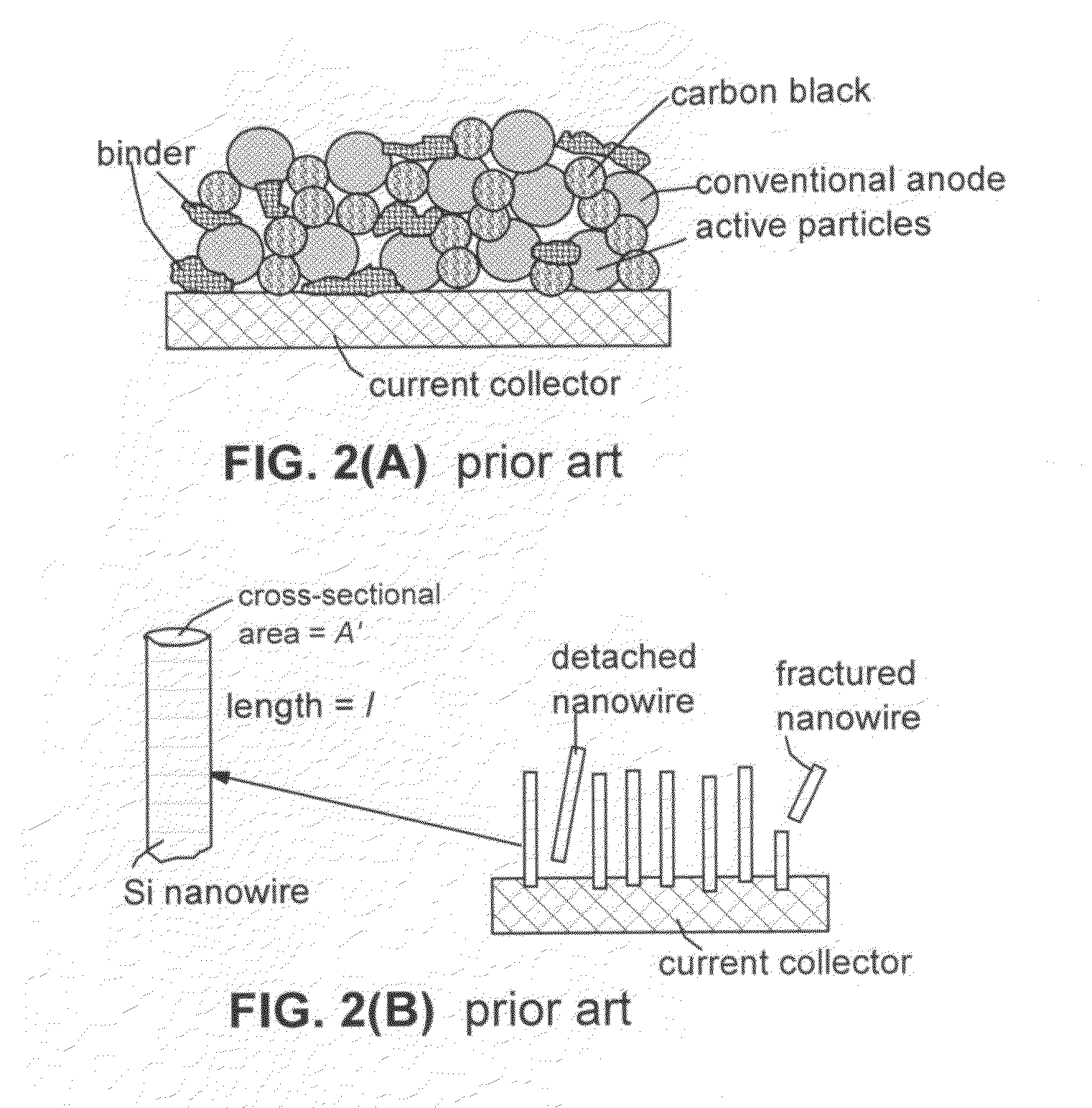Secondary lithium ion battery containing a prelithiated anode
- Summary
- Abstract
- Description
- Claims
- Application Information
AI Technical Summary
Benefits of technology
Problems solved by technology
Method used
Image
Examples
example 1
[0126]Summarized in FIG. 3 are the results of a study that illustrates the impressive advantages of the presently invented anode technology. The sample was prepared by using the prelithiated Si particles coated with amorphous carbon (13% after carbonization of phenolic resin) and bonded by PVDF as the working electrode and lightly lithium-plated Cu foil as the counter electrode and reference electrode. A specific discharge capacity as high as 2,500 mAh per gram of (Si+C) was maintained after 20 cycles. By contrast, non-prelithiated Si particles, with or without a carbon coating, exhibit a high initial capacity, but the capacity rapidly fades away as the number of repeated charge / discharge cycles increases.
example 2
[0127]FIG. 4 shows the results of ball-milling prelithiated and non-prelithiated Si particles. Clearly, prelithiated particles can be more easily reduced to sub-micron scales. This is a highly surprising, yet desirable result considering the fact that, in general, nano particles have been difficult and expensive to produce. The present invention unexpectedly discovers an efficient way to cost-effectively produce nano particles.
example 3
[0128]We have also investigated the cycling behaviors of several samples, including Si—NGP—C nanocomposite, Si—C nanocomposite (no NGP), and graphite-filled C—Si nanocomposite solid particle-based anodes (all containing Si nano particles). One of the samples prepared contains approximately 15% NGPs, 60% Si nano particles, and 25% carbon matrix and is herein designated as Sample-A. The corresponding sample containing Si nano particles that are prelithiated is designated Sample-A-P. For comparison purpose, a Comparative Sample-B was prepared by dispersing Si nano particles (approximately 70%) in a pitch matrix, as in Sample-A, but without the presence of any NGP. A corresponding sample containing Si nano particles that are prelithiated is denoted as Sample-B-P. A Comparative Sample-C was prepared by replacing NGPs with fine natural graphite particles (average diameter=3.5 μm) obtained by air-jet milling of natural flake graphite. A corresponding sample containing Si nano particles tha...
PUM
 Login to View More
Login to View More Abstract
Description
Claims
Application Information
 Login to View More
Login to View More - R&D
- Intellectual Property
- Life Sciences
- Materials
- Tech Scout
- Unparalleled Data Quality
- Higher Quality Content
- 60% Fewer Hallucinations
Browse by: Latest US Patents, China's latest patents, Technical Efficacy Thesaurus, Application Domain, Technology Topic, Popular Technical Reports.
© 2025 PatSnap. All rights reserved.Legal|Privacy policy|Modern Slavery Act Transparency Statement|Sitemap|About US| Contact US: help@patsnap.com



